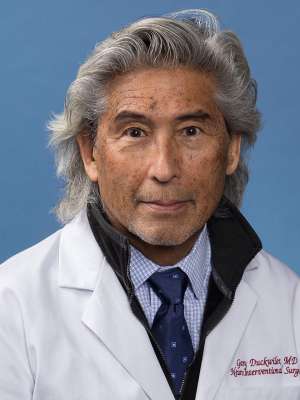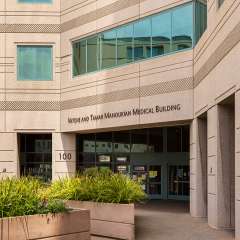
Gary R. Duckwiler, MD
- Interventional Neuroradiology
About
Dr. Gary R. Duckwiler is Professor of Radiology and Neurosurgery at the University of California, Los Angeles. He is the Chief and Fellowship Director of the Division of Interventional Neuroradiology, and Co-Director of the HHT (Hereditary Hemorrhagic Telangiectasia) Center of Excellence at the David Geffen School of Medicine at UCLA, and Co-Founder of the UCLA Vascular Birthmark Center.
Dr. Duckwiler received his medical degree, Radiology residency, Diagnostic Neuroradiology Fellowship and Interventional Neuroradiology Fellowship at UCLA. He has been a faculty member of the Department of Radiological Sciences since 1989.
Besides his involvement in all aspects of Interventional Neuroradiology/NeuroEndovascular Surgery, he has a particular and longstanding interest in acute stroke treatment, and was deeply involved in the development, trials, and FDA/CMS approval processes for the first cleared stroke device (MERCI device). He also has a deep focus on Aneurysm therapy, and was one of the physicians involved in the first human case of aneurysm detachable coiling. He was prior President of the Society of NeuroInterventional Surgery, prior Board member of the World Federation of Interventional & Therapeutic Neuroradiology, and a Fellow of the American Heart Association and Society of NeuroInterventional Surgery. He holds certifications by the American Board of Radiology in both Diagnostic Radiology and Neuroradiology and by the American Board of Neurological Surgery in CNS-Endovascular Surgery. Dr. Duckwiler's clinical interests include Interventional Spine Service.
Languages
Education
Medical Board Certifications
Fellowship
Residency
Internship
Degree
Recognitions
- Super doctors, Southern California, 2025
- Super Doctors® Southern California, 2022 - 2025
- Top Doctors, Los Angeles Magazine, 2021, 2023
Locations

Westwood Imaging Center & Interventional Radiology Clinic
Hospital Affiliations
Medical Services
Areas of Focus
Research
Publications
In the News
"How did the recent stroke trials change your daily practice?" - UCLA Interventional Neuroradiology
Please note: News website links may expire without notice.
Insurance
- Aetna
- Anthem Blue Cross
- Blue Shield of California
- Centivo
- Cigna
- First Health
- Health Net of California
- Interplan (part of HealthSmart)
- Medicare Advantage
- MultiPlan
- UFCM Health System
- Prime Health Services
- Private Healthcare Systems (PHCS)
- TRICARE
- UnitedHealthcare
The list of health care plans above may not be comprehensive and could change.
Please contact your benefits coordinator or health insurance company directly to verify coverage.
Visit our health insurance information page for more details.
Recognitions
- Super Doctors® Southern California, 2022 - 2025
- Top Doctors, Los Angeles Magazine, 2021, 2023
Links
- uclahealth.org/radiology
- uclahealth.org/radiology/interventional-neuroradiology
- pituitary.ucla.edu
- uclahealth.org/stroke
- uclahealth.org/radiology/hht
